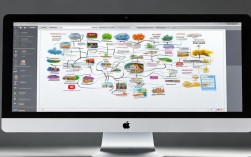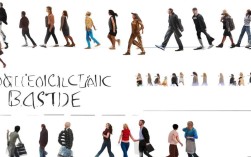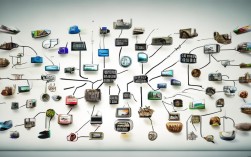最常用和最直接的表达
惯性思维 (直接音译/意译,常用于商业、心理学领域)
这是最直接的翻译,直接将“惯性”和“思维”组合起来,在许多商业讨论、创新培训和心理学文章中,这个说法已经被广泛接受和使用。

- 发音: /ɪnˈɜːr.ʃən ˈθɪŋk.ɪŋ/ (近似音:额-神-森-思英)
- 例句:
- We need to break our inertia thinking to solve this problem creatively.
- 我们需要打破惯性思维,才能创造性地解决这个问题。
- Inertia thinking is the biggest obstacle to innovation in this company.
- 惯性思维是这个公司创新的最大障碍。
- We need to break our inertia thinking to solve this problem creatively.
Mental Set / Set of Mind (心理学术语,非常贴切)
这是心理学上的一个专业术语,指个体在解决问题时,倾向于使用先前成功过的方法,即使该方法不再适用,这非常精准地描述了“惯性思维”的核心——思维上的“定势”或“套路”。
- 发音: /ˈmen.təl set/ (近似音:门-头-赛特)
- 例句:
- He has a strong mental set that all problems can be solved with money.
- 他有一个很强的思维定势,认为所有问题都能用钱解决。
- The experiment showed that participants were trapped by a set of mind.
- 实验表明,参与者陷入了思维定势。
- He has a strong mental set that all problems can be solved with money.
强调“习惯”和“常规”的表达
Habitual Thinking (强调“习惯性”)
这个表达侧重于“思维已经成为一种习惯”,强调其无意识和自动化的特点。
- 发音: /həˈbɪtʃ.uəl ˈθɪŋ.kɪŋ/ (近似音:哈-比-雀-儿-思英)
- 例句:
- We must challenge our habitual thinking patterns to see new possibilities.
- 我们必须挑战自己的习惯性思维模式,才能看到新的可能性。
- We must challenge our habitual thinking patterns to see new possibilities.
Conventional Thinking (强调“传统、常规”)
这个表达侧重于思维符合社会、行业或文化的传统规范和常规做法,是“约定俗成”的思考方式。
- 发音: /kənˈven.ʃən.əl ˈθɪŋ.kɪŋ/ (近似音:肯-文-神-儿-思英)
- 例句:
- His conventional thinking prevented him from accepting the radical new idea.
- 他常规的思维方式让他无法接受那个激进的新想法。
- His conventional thinking prevented him from accepting the radical new idea.
强调“思维局限”的表达
Rut (一个非常形象的口语化表达)
"Rut" 本意指“车辙”,引申为“一成不变的、枯燥乏味的状态”。"to be in a rut" 或 "thinking rut" 非常生动地描绘了陷入惯性思维、无法跳脱出来的那种感觉。
- 发音: /rʌt/ (近似音:入特)
- 例句:
- I feel like I'm in a creative rut. I need to try something new.
- 我感觉我的创造力陷入了瓶颈(或:陷入了思维的泥潭),我需要尝试一些新东西。
- We need to get out of our thinking ruts and be more innovative.
- 我们需要跳出思维的定式,更具创新精神。
- I feel like I'm in a creative rut. I need to try something new.
强调“思维框架”的表达
Mindset (强调一种固化的思维模式)
"Mindset" 指的是一种心态或思维模式,当它固化时,就很难改变,与“惯性思维”的含义高度相关。
- 发音: /ˈmaɪnd.set/ (近似音:迈的-赛特)
- 例句:
- We need to change our fixed mindset and embrace a growth mindset.
- 我们需要改变我们固化的思维模式,拥抱成长型思维。
- The traditional mindset in this industry is slowly changing.
- 这个行业里传统的思维模式正在慢慢改变。
- We need to change our fixed mindset and embrace a growth mindset.
总结与如何选择
| 英文表达 | 核心含义 | 适用场景 |
|---|---|---|
| Inertia Thinking | 直接翻译,强调“惯性” | 商业、创新、心理学讨论,比较新潮的说法 |
| Mental Set | 心理学术语,强调“思维定势” | 学术、专业分析,非常精准 |
| Habitual Thinking | 强调“习惯性” | 日常交流,强调行为的无意识重复 |
| Conventional Thinking | 强调“传统、常规” | 描述与社会规范或行业惯例相符的思维 |
| Rut | 形象比喻,强调“困境” | 口语、非正式场合,生动地表达“被困住”的感觉 |
| Mindset | 强调“固化的思维模式” | 个人发展、心理学、领导力培训 |
- 在正式或专业场合,用 Mental Set 最准确。
- 在商业或创新讨论中,用 Inertia Thinking 或 Conventional Thinking 都很合适。
- 在日常口语中,用 I'm in a rut 或 habitual thinking 更自然。
- 如果想强调一种深层次的信念模式,用 Mindset。











